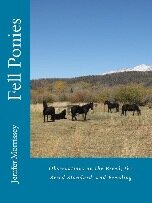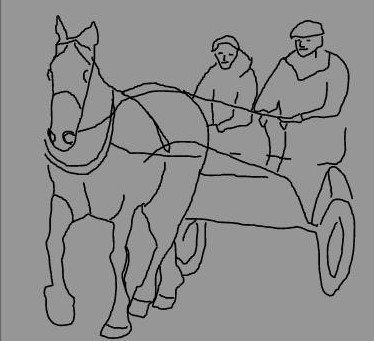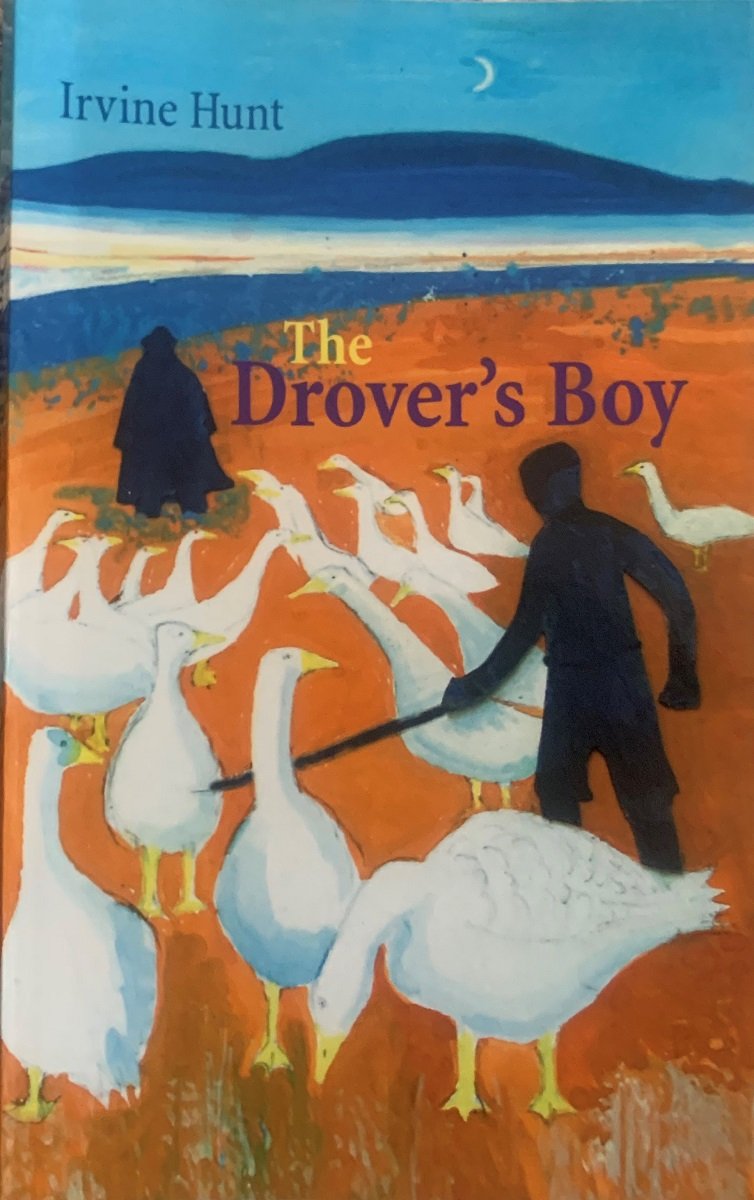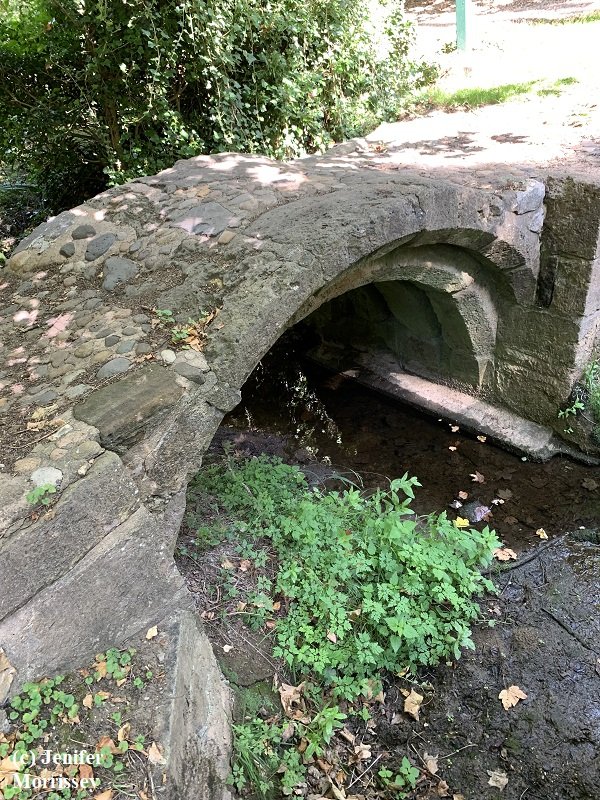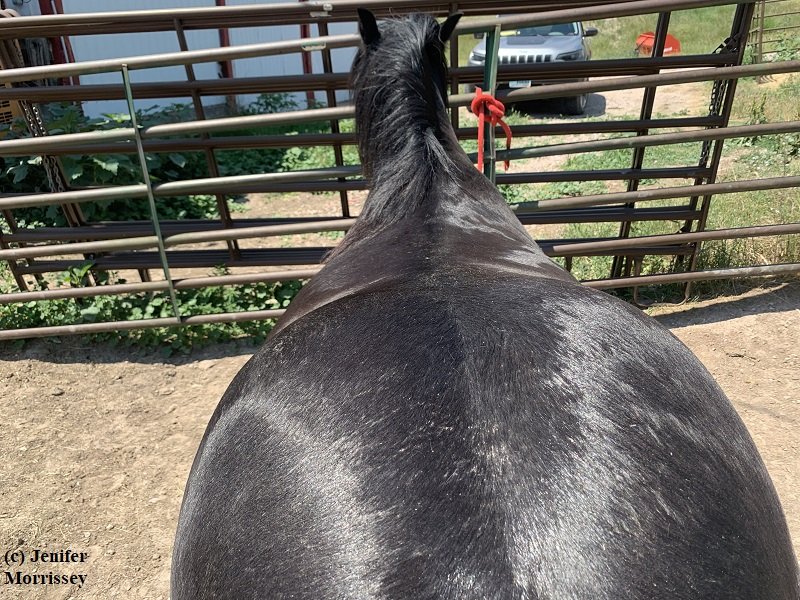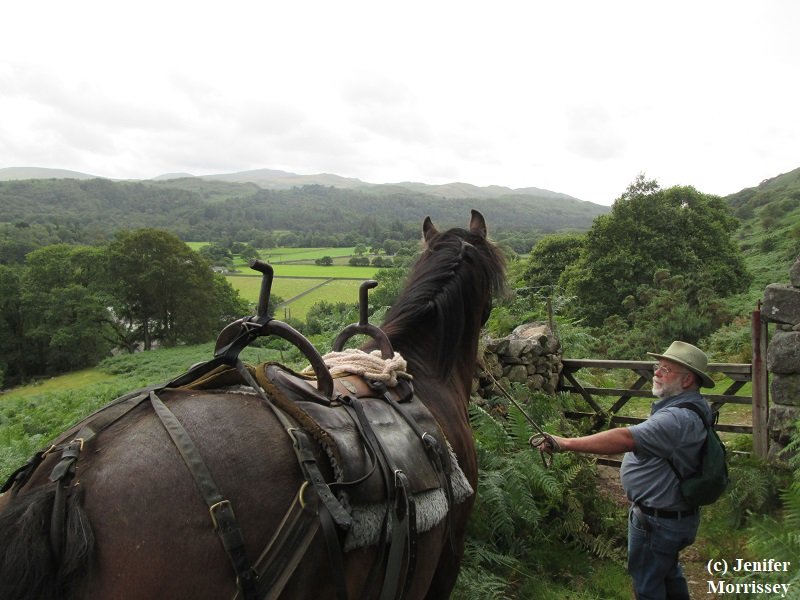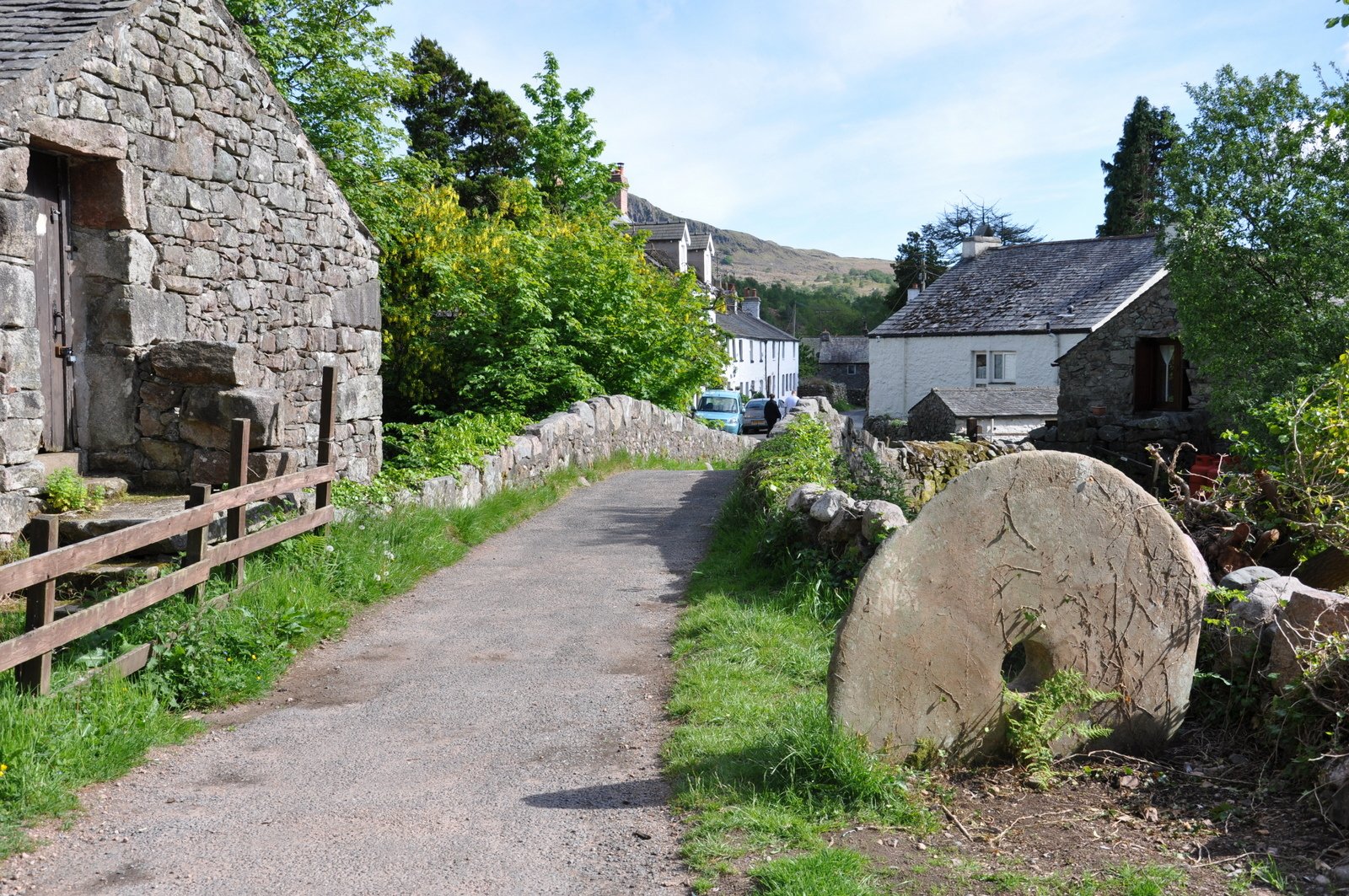Bob Orrell lived in Ravenglass for fifteen years. In addition to his appreciation of Fell Ponies, he is also a sailor and developed an appreciation for the role Ravenglass played in the area’s history during the packhorse era. From his book Cumberland’s Rum Butter Coast: “There have been a lot of changes over the years but even in twenty-first century Ravenglass, with its yellow lines, its ‘Residents Only’ parking signs, its ‘Private Property’ notices and its glut of cars, it is not easy to walk past the very old cottages on the seaward side of the village main street and not imagine the shady figures of smugglers landing from boats with muffled oars and carrying kegs of rum, whisky and brandy into the eager arms of the cottagers.” (77)
Bob continues: “We know that booze and baccy came into the country, and that salt and wadd [pencil lead] went out, but where along the coast did this booming activity take place? Attention naturally focuses on Ravenglass with its quiet harbour and sleepy little houses sprawled higgledy-piggledy across the shingle…. In the early days of the ‘Running Trade’ it is very possible that the village was a smuggling haven, particularly when boats arrived regularly from the Isle of Man with cattle. It would have been easy to hid a few kets [casks of liquor] in the hold and unload them when all was quiet. Yet as the ‘Trade’ became busier and the excisemen were more vigilant, it was unlikely that anyone would have risked using Ravenglass… For miles north and south of the estuary there are long expanses of lonely beach and sand dunes, often topped by an isolated farm house. It is here that the smugglers would land and store their loot.” (78)
The history of the valley of the River Esk is obviously rich, both within and around the era when packhorses were the primary modes of transportation for trade goods. Robert Gambles, in his Story of the Lakeland Dales summarizes the era well: “The concerns of sheep farming have been the primary pre-occupation of the inhabitants of Eskdale for many hundreds of years but from the mid-17th to the mid-20th centuries,… 1,500 years after the Romans had departed, their road along the riverside became a busy trading route. Strings of pack horses wended their way towards the then flourishing port of Ravenglass, laden with panniers of slate, iron, wool, Borrowdale wad, charcoal, tanned leather, turned tools and implements of oak, ash and holly, and even hazel nuts, all local products, and on their return they brought cargoes of rum, brandy, sugar, molasses, tea, lace, salt and tobacco – all dutiable but not all known to the excisemen…. And this was only one of the many trails which converged on Eskdale. The rounded hillock at Randle How, by Eskdale Green, appears to have been a veritable Piccadilly in these days, for this was the meeting point of six routes.” (81) In time hopefully more stories will be told about how the ancestors of today’s Fell Ponies enriched the lives of their human partners in the Woods, the quarries, and on the tracks of Eskdale and its environs.
Hartwell, Michael. An Illustrated Guide to the Packhorse Bridges of the Lake District. Earnest Press, 1994, p. 110
Wordsworth, William. Guide Through the District of the Lakes in the North of England, With a Description of the Scenery, etc. For the use of Tourists and Residents. Fifth Edition, 1835, p. 3.
Millard, Sue. A Century of Fells. Dawbank, Greenholme, Cumbria, England: Jackdaw Ebooks, 2022, p. 15.
Walking in the Footsteps of Mary Fair (Footsteps). Eskdale and District Local History Society, 2008, p. 5
https://en.wikipedia.org/wiki/History_of_the_horse_in_Britain
Lake District National Park Partnership, “Description of the English Lake District, Section 2.a,” Nomination of the English Lake District for Inscription on the World Heritage List, p. 104
Austin, Albyn. “The Mines of Eskdale,” The CIHS Newsletter, May 1990 at https://www.cumbria-industries.org.uk/a-z-of-industries/iron-mining/the-mines-of-eskdale/
Winchester, Angus. “Peat Storage Huts in Eskdale,” CWAAS Transactions, Cumberland and Westmorland Antiquarian and Archaeological Society, 1984, p. 109.
http://www.romanroads.org/gazetteer/cumbria/M740.htm
Orrell, Robert. Saddle Tramp in the Lake District. London, Granada Publishing Limited, 1982, p. 164-165.
Same as #10.
Gambles, Robert. The Story of the Lakeland Dales. Phillimore & Co. Ltd, Chichester, 1997.p. 63
Footsteps, p. 19.
Gambles, p. 64.
Dickinson, Maggie B. “Rebel with a cause,” Cumbria, February 2017, p. 28.
https://www.nationaltrust.org.uk/features/eskdale
Gambles, p. 67.
Greenbank, Tony. “King of the crags,” The Guardian, 10/21/12 at https://www.theguardian.com/environment/2012/oct/21/eskdale-cumbrian-king-crags
Parker, Dr. Charles A., and Miss Mary C. Fair. “Bloomery Sites in Eskdale and Wasdale – Part 1,” CWAAS Transactions, 7/7/21, p. 96-7.
Hinchliffe, Ernest. A Guide to the Packhorse Bridges of England. Milnthorpe, Cumbria: Cicerone Press, 1994, p. 51.
Hartwell, p. 106.
Winchester, p. 107.
Winchester, p. 105.
The Detailed Old Map is available at this link: https://www.archiuk.com/cgi-bin/build_nls_historic_map_archi_sub.pl?map_location=%20Fisherground%20XXXXFRMXXXX%20Cumbria&search_location=Fisherground%20XXXXFRMXXXX,%20Cumbria,%20NY1500,%20NY%2015%2000&os_series=1&is_sub=&pwd=&latitude=54.388360&longitude=-3.310447&postcode=
Orrell, p. 167.
Gambles, Robert, and Dr. Sam Forrester. “Doctor Bridge, Eskdale,” Conserving Lakeland, edition 30 - Winter 1997, p. 16.
Winchester, p. 111.
“Ancient Monuments in this township 1923 List Birker and Austhwaite” at https://www.cumbriacountyhistory.org.uk/sites/default/files/am_birker_austhwaite.pdf
Parker and Fair, p. 96.
Fair, Miss Mary C. “Some notes on the Eskdale Twentyfour Book,” CWAAS Transactions, 4/7/21, p. 77.
https://www.lakesguides.co.uk/html/topics/innf.htm
http://www.visitoruk.com/Ambleside/eskdale-C592-V27120.html
Eskdale Show history page as accessed January 2016 and no longer on-line
https://www.cumbria-industries.org.uk/woollen-mills/
http://www.pastpresented.ukart.com/eskdale/gillbank.htm
Hartwell, p. 113.
https://eskdale.info/history.html as accessed 4/24/22
Gambles, p. 67.
Orrell, Bob. Cumberland’s Rum Butter Coast. Seascale, Cumbria, England: Bob Orrell Publications, 2012, p. 59.
https://www.eskdalemill.co.uk/history/the-mill-building/ as accessed 4/24/22
https://www.eskdalemill.co.uk/history/mills-in-the-lake-district/ as accessed 4/24/22
https://www.eskdalemill.co.uk/history/eskdale-mill-the-community/ as accessed 4/24/22
Dickinson, Maggie. “Grist to the Mill,” Cumbria, December 2016, p. 53.
Hinchliffe, p. 37-8.
Winchester, p. 103.
Orrell, Saddle Tramp, p. 35.
Parker and Fair, p. 96.
Fair, Miss Mary C. “Austhwaite and Dalegarth,” CWAAS Transactions, 9/18/1928, p. 265.
Parker and Fair, p. 95.
Parker and Fair, p. 97.
Winchester, p. 105.
Parker and Fair, p. 95.
https://www.stanleyghyll-eskdale.co.uk/history/
Parker and Fair, p. 95.
Winchester, p. 107.
Gambles, p 72.
Bangarth And Blea Tarn Iron Mines, Eskdale, Cumbria Archaeological Survey Report, Oxford Archaeology North, November 2012, p. 23.
Parker and Fair, p. 92.
Fair, Miss Mary C. “A Relic of Pack-Horse Days in Eskdale,” CWAAS Transactions, 7/7/1921, p. 100.
Fair, “Pack-Horse Days,” p. 99.
Footsteps, p. 30.
The Forest Howe reference is in Parker and Fair, p. 92. The Rabbit How reference is in Footsteps, p. 30.
Tylecote, R.F. and J. Cherry. “The 17th-century bloomery at Muncaster Head,” CWAAS Transactions, 7/3/1970, p. 104.
Footsteps, p. 28.
Tylecote and Cherry, p. 87-88.
Tylecote and Cherry, p. 97.
Footsteps, p. 38.
Parker and Fair, p. 94-95.
Gambles, p. 66.
Orrell, Robert. The Best Guide to Ravenglass. Gillerthwaite, Ennerdale, Cumbria: Best Publishing Company, 1976, p. 53.
Orrell, Cumberland’s Rum Butter Coast, p. 40.
Orrell, Cumberland’s Rum Butter Coast, p. 43.
Orrell, Cumberland’s Rum Butter Coast, p. 39.
Orrell, Cumberland’s Rum Butter Coast, p. 39.
Orrell, Cumberland’s Rum Butter Coast, p. 40.
Orrell, The Best Guide to Ravenglass, p. 20-1.
Orrell, Cumberland’s Rum Butter Coast, p. 51.
Orrell, Cumberland’s Rum Butter Coast, p. 28-29.
Orrell, The Best Guide to Ravenglass, p. 3.
Orrell, Cumberland’s Rum Butter Coast, p. 46.
Gambles, p. 68.



